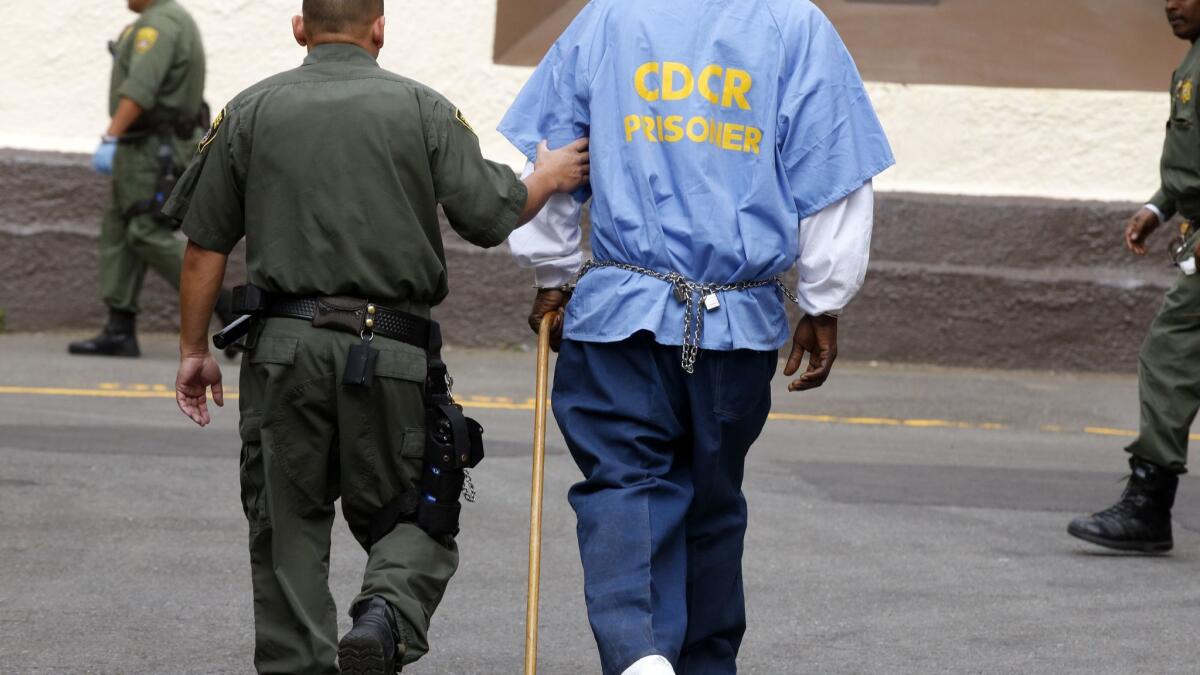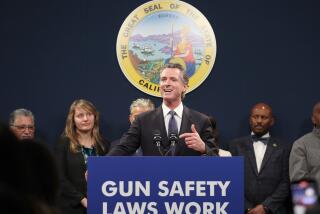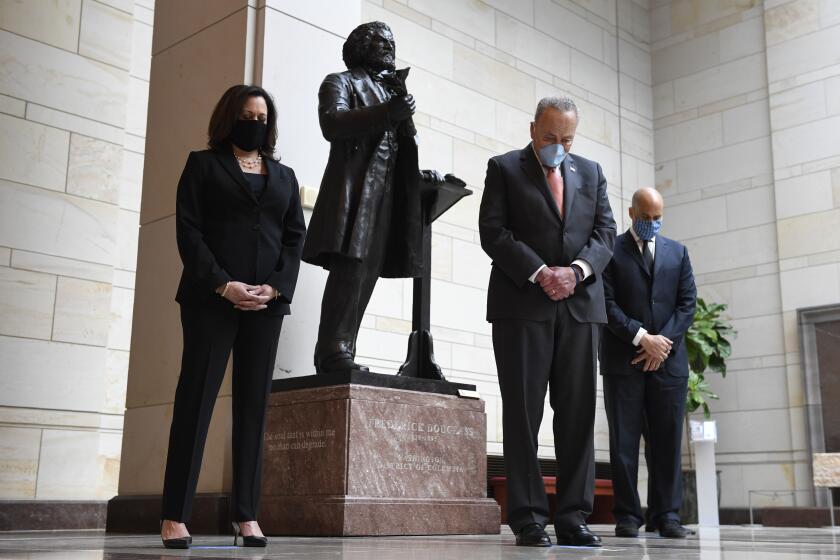Column: Gov. Gavin Newsom isn’t trying to change anyone’s mind on the death penalty — yet

When Gov. Gavin Newsom stepped onto a state Capitol podium on Wednesday to order a moratorium on executions — an action more sweeping than that of any California governor in history — he brought with him only a folded piece of paper with a few notes scribbled as reminders.
There was no finely crafted speech to win over the hearts and minds of skeptical Californians. The governor sent a message to the world outside by looking inward — taking the political and making it personal.
“I won’t be able to sleep at night,” he said of allowing executions to resume once a revised lethal injection procedure is approved by the courts. “This is about who I am as a human being. This is about what I can, and cannot, do.”
Few decisions as governor will afford Newsom a similar chance to speak beyond the heated battles of the moment. Even humanitarian dilemmas like homelessness or the detention and separation of migrant families come with political implications that are more immediate. The debate over the death penalty, in contrast, has lasted for generations.
And yet Newsom’s announcement did share something in common with the other big decision of his nascent administration: his embrace of a new path forward on high-speed rail. While he made his position more clear on capital punishment than he did on the bullet train project, in neither instance did he do more than offer a temporary solution.
To do more on the death penalty will take the support of the voters and an amendment to the California Constitution. The governor offered a brief sketch of what that campaign’s message might look like — ending racial and class inequity in death sentences, reducing the cost to taxpayers for years of court appeals, stopping the immorality of state-sanctioned killing — but stopped short of pledging to lead the effort.
“I have enormous respect and admiration for people that disagree,” he told reporters. “These are tough things to square. These are hard things, you know, to process.”
What families of murder victims have to say about Gavin Newsom’s death penalty ban »
Should Newsom step forward it will take more than just a personal plea. Ballot initiatives to repeal the death penalty failed in 2012 and 2016. A Bay Area lawmaker is now proposing the Legislature place the issue on the ballot for a third time in 2020.
The odds could be tough in the state Capitol, too. Twenty-seven Assembly Democrats represent districts that voted against the 2012 repeal measure. Thirty-three Assembly members — more than half of the house’s Democratic caucus — represent districts that voted against the proposal in 2016. Similar challenges exist in the state Senate.
Data from decades of the nonpartisan Field Poll show consistently strong statewide support for the death penalty as far back as the mid-1950s. Even in 2011, 68% of registered voters surveyed were in favor. Self-described “middle of the road” voters seemed to be a key factor.
But the governor and other death penalty opponents may believe, as do some political strategists, that California’s electorate is shifting toward the political left. Once a sure bet to favor stiff penalties and punishment, recent elections have shown a willingness to consider new approaches to criminal justice. While the line has held steady at the death penalty, repeal supporters have wondered what it would take to change that.
That’s where Newsom comes in. Perhaps sensing the peril in making a hard sell too soon, the governor suggested Wednesday that there would be plenty of time to ask Californians to reconsider their position.
“I hope this will prevail as a conversation anew on the death penalty in this country,” Newsom said in announcing his executive order. “Now the pendulum is swinging in a new direction.”
Follow @johnmyers on Twitter, sign up for our daily Essential Politics newsletter and listen to the weekly California Politics Podcast
More to Read
Get the L.A. Times Politics newsletter
Deeply reported insights into legislation, politics and policy from Sacramento, Washington and beyond. In your inbox three times per week.
You may occasionally receive promotional content from the Los Angeles Times.











